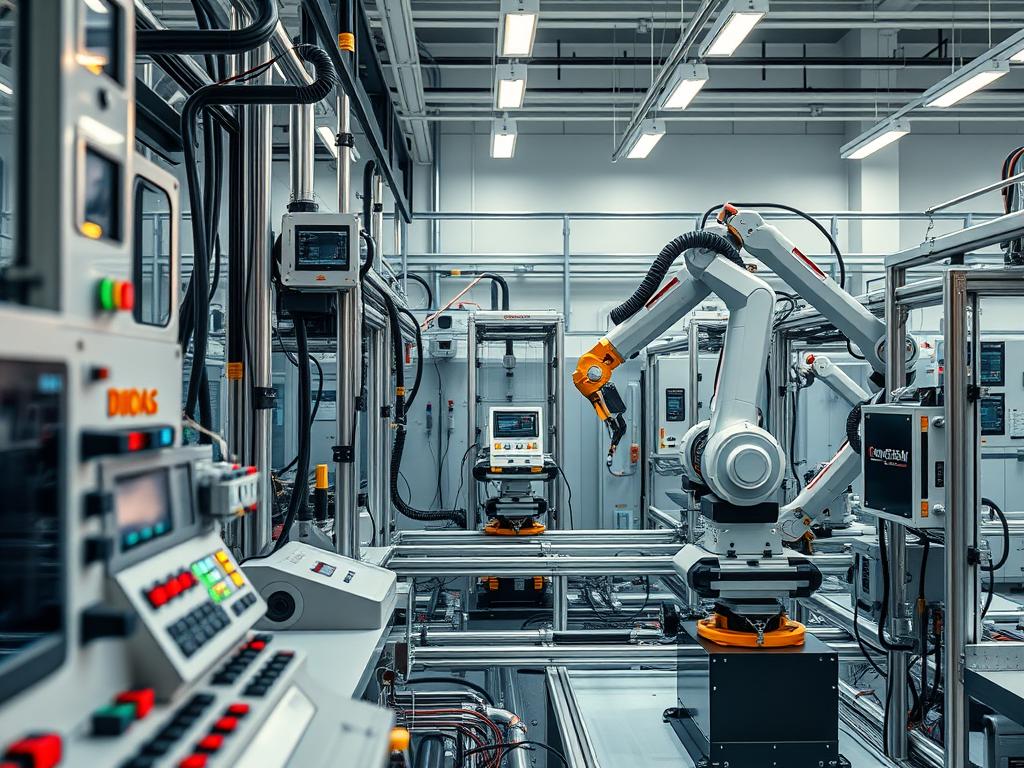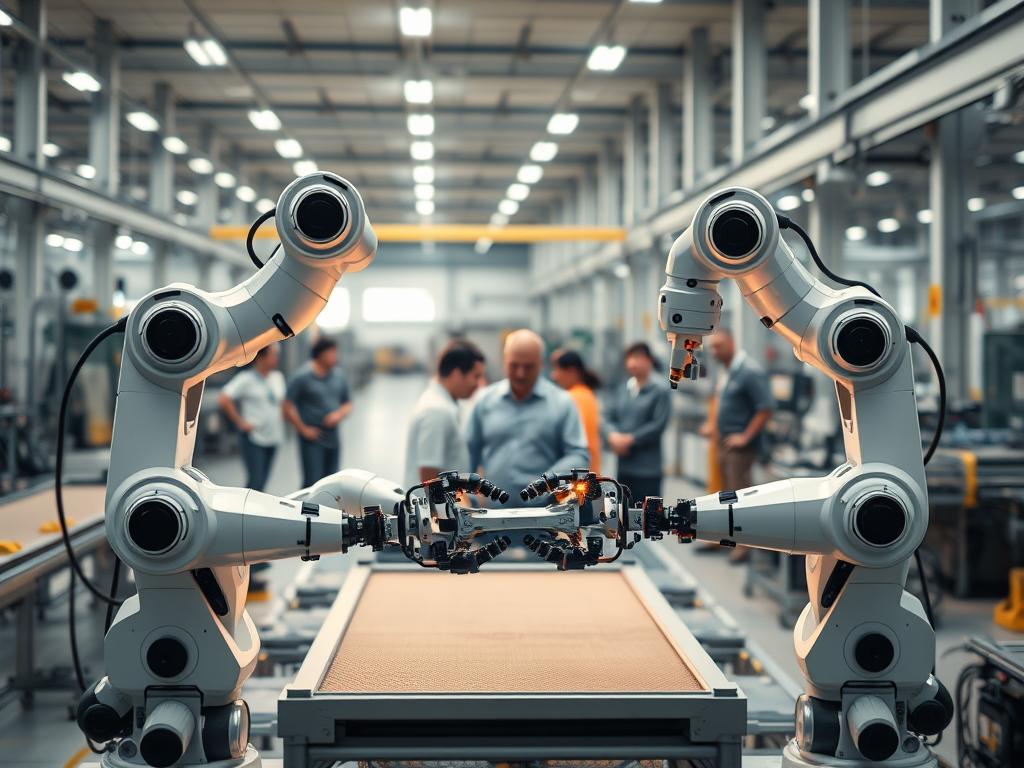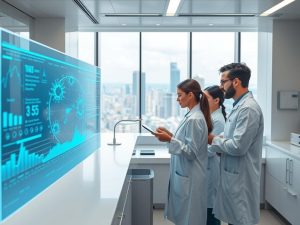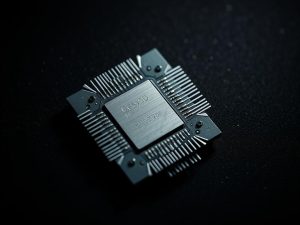Modern industries thrive on efficiency, and automation technologies are the driving force behind this transformation. From manufacturing to finance, businesses leverage tools like robotic process automation (RPA) and artificial intelligence to streamline workflows. These systems eliminate repetitive tasks, reduce errors, and free up human talent for strategic work.
Intelligent automation combines RPA with cognitive capabilities such as machine learning and natural language processing. This blend enables end-to-end process optimization, adapting to complex scenarios in real time. For example, logistics companies use these tools to predict delivery delays, while healthcare providers automate patient data analysis.
The evolution from basic scripting to self-learning systems has reshaped entire sectors. Organizations adopting these innovations report 30–50% faster operations and significant cost reductions. As competition intensifies, staying updated on automation trends isn’t optional—it’s critical for survival.
Key Takeaways
- Automation blends RPA with AI for smarter workflows
- Intelligent systems adapt to dynamic business needs
- Adoption boosts speed while cutting operational costs
- Multiple industries benefit from tailored solutions
- Continuous learning defines modern automation tools
Introduction to Automation Technologies
Companies across sectors are redefining productivity through smart systems that handle repetitive tasks. Unlike basic rule-based tools, modern solutions combine decision-making intelligence with seamless execution. This shift allows businesses to tackle complex challenges like supply chain disruptions or customer service bottlenecks.
Smart Systems in Action
Advanced platforms now process invoices, analyze customer feedback, and predict equipment failures without human input. Retail giants use these tools to adjust pricing strategies in real time based on market trends. Banks automate fraud detection by scanning millions of transactions instantly.
Redefining Business Outcomes
A logistics firm recently cut delivery errors by 40% using automated route optimization. Healthcare providers reduced patient wait times by analyzing appointment patterns. These improvements demonstrate how adaptive workflows create tangible value across industries.
Workforce roles evolve alongside these changes. Employees now focus on creative problem-solving while machines handle data-heavy tasks. This partnership drives innovation in sectors from manufacturing to digital marketing.
what are the technologies used for automation
Innovative tools are reshaping how organizations approach repetitive and complex workflows. These solutions combine precision with adaptability, handling tasks from inventory tracking to customer service routing. Unlike static machinery, modern platforms learn from patterns and adjust execution dynamically.

Defining Automation Technologies
Contemporary systems merge rule-based logic with cognitive capabilities. Basic scripts handle predictable tasks like data entry, while advanced platforms interpret unstructured documents using natural language processing. For instance, insurance firms process claims 60% faster by combining optical character recognition with decision trees.
Three elements define next-gen solutions:
- Adaptive learning: Algorithms refine actions based on historical data
- Cross-platform integration: Connects legacy software with cloud-based tools
- Real-time analytics: Monitors process efficiency during execution
Relevance in Modern Business Operations
Manufacturers reduced equipment downtime by 35% using predictive maintenance systems. Retailers automate stock replenishment by analyzing sales trends and supplier lead times. These improvements demonstrate how intelligent workflows drive measurable outcomes.
Scalability remains a critical advantage. Cloud-based automation allows companies to handle seasonal demand spikes without hiring temporary staff. A logistics provider doubled shipment capacity using this approach while maintaining 99.8% accuracy rates.
Decision-makers prioritize these tools for maintaining compliance and reducing operational risks. Automated audit trails in financial services prevent regulatory penalties, showcasing strategic value beyond mere cost-cutting.
AI and Machine Learning in Automation
Cutting-edge systems now drive operational excellence through self-improving algorithms and pattern recognition. These tools analyze mountains of information to optimize workflows, from factory floors to financial forecasts. Artificial intelligence acts as the brain behind modern automation, while machine learning enables continuous adaptation to new challenges.
Predictive Analytics and Data Insights
Advanced algorithms process historical records and live inputs to forecast outcomes with surgical precision. Retailers predict inventory needs 12 weeks ahead by analyzing buying patterns and weather data. Energy firms prevent grid failures using equipment performance models trained on decade-old maintenance logs.
| Algorithm Type | Core Function | Industry Use Case |
|---|---|---|
| Supervised Learning | Classification | Fraud detection in banking |
| Unsupervised Learning | Pattern discovery | Customer segmentation |
| Reinforcement Learning | Adaptive optimization | Robotic assembly lines |
Enhancing Process Efficiency
Manufacturers achieve 35% faster production cycles using real-time quality control systems. These platforms flag defects during assembly rather than post-production. Logistics companies reroute shipments automatically when sensors detect traffic bottlenecks.
Self-learning models grow sharper with each data interaction. A telecom provider reduced customer churn by 22% after implementing churn prediction tools. The system now updates its forecasts hourly using social media trends and support ticket analysis.
Collaborative Robots and Robotic Process Automation
Human-robot partnerships now redefine operational safety and efficiency across sectors. Collaborative robots (cobots) operate alongside teams using advanced sensors and adaptive programming. Meanwhile, robotic process automation handles digital workflows with precision, merging physical and virtual productivity gains.

Improving Workplace Safety
Cobots eliminate hazards through four safety-focused designs. Power and force-limiting models automatically reduce impact during unexpected contact. Speed and separation systems maintain safe distances using 3D cameras. These innovations cut injury rates by 48% in automotive plants handling heavy components.
Manufacturers deploy cobots for welding and material handling in confined spaces. Sensors detect human presence, triggering instant shutdowns if safety zones are breached. This approach protects workers while maintaining 98% production uptime.
Real-World Industry Applications
Pharmaceutical companies use cobots for sterile packaging tasks, reducing contamination risks. Logistics firms automate palletizing with robotic process automation integration, processing 1,200 items hourly. One retailer slashed inventory errors by 65% using RFID-tagged cobots.
RPA transforms back-office operations through:
- Automated invoice matching across vendor portals
- Real-time payroll adjustments using HR databases
- Compliance reporting with 99.9% accuracy rates
A financial services provider processed 85,000 loan applications monthly after implementing RPA. These systems validate documents 40x faster than manual teams while maintaining regulatory standards.
Semantic Software Systems and Augmented Intelligence
Modern enterprises decode complex datasets through semantic frameworks that bridge human expertise and machine capabilities. These solutions transform raw information into actionable insights by understanding context and relationships within data.

Enhancing Data Understanding
Semantic software uses Resource Description Framework (RDF) and Web Ontology Language (OWL) to create machine-readable knowledge graphs. These structures map connections between disparate datasets, enabling systems to interpret medical records, financial reports, and supply chain logs with contextual awareness.
A pharmaceutical company reduced drug development timelines by 18 months using semantic analysis of research papers. The technology identified overlooked chemical interactions across 12 million documents, showcasing its pattern recognition power.
Boosting Human-AI Collaboration
Augmented intelligence merges human judgment with algorithmic precision. Radiologists using these tools detect tumors 34% faster while maintaining diagnostic accuracy. The leading intelligent automation technologies provide decision support without overriding expert oversight.
Three key benefits drive adoption:
- Real-time translation of technical jargon for cross-departmental collaboration
- Automated risk assessment models that learn from analyst feedback
- Interactive dashboards highlighting data anomalies for human review
Financial institutions now process loan applications 50% faster using this hybrid approach. Systems handle credit scoring while underwriters focus on complex cases requiring empathy and regulatory knowledge.
Process Intelligence and Process Mining
Organizations now unlock hidden operational insights through systems that map every step of their daily activities. Process intelligence builds digital twins of business workflows, exposing inefficiencies invisible to manual audits. These tools analyze event logs from software like ERPs and CRMs to reconstruct how tasks actually unfold across teams.

Analyzing Operational Workflows
Advanced platforms ingest data from multiple sources to create living models of operations. They track:
- Task completion rates across departments
- Time spent on repetitive approvals
- Variations in customer onboarding paths
A telecom company discovered 22 redundant steps in service activation by visualizing their workflows. Real-time dashboards now alert managers when processes deviate from optimal patterns.
Identifying Bottlenecks in Processes
Process mining tools compare planned procedures against real-world execution data. This reveals:
| Planned Step | Actual Behavior | Impact |
|---|---|---|
| 3-day invoice approval | 6.5-day average | Cash flow delays |
| Standardized QA checks | 14% skipped steps | Product defects |
One healthcare provider reduced patient discharge time by 40% after pinpointing authorization delays. These insights guide targeted automation investments—like deploying RPA for document routing in slow-moving stages.
Financial institutions use process intelligence to flag compliance risks in transaction trails. By merging operational analytics with automation triggers, businesses achieve 30% faster process improvements compared to traditional methods.
Natural Language Processing and Computer Vision
Businesses now unlock hidden value in emails, images, and customer interactions through advanced pattern recognition. These systems transform chaotic information into structured insights, powering decisions from supply chains to patient care.

Interpreting Unstructured Data
Natural Language Processing (NLP) deciphers text through four key steps. Tokenization breaks sentences into words, while entity recognition identifies names and locations. Sentiment analysis gauges customer emotions in reviews, and semantic modeling connects related concepts across documents.
Computer vision applies similar logic to visual data. Retailers scan shelves to track inventory gaps using object detection. Manufacturers inspect products for defects with 0.02mm precision cameras. These tools process 500+ images per second, flagging issues humans might miss.
| Technology | Core Function | Industry Application |
|---|---|---|
| NLP | Text sentiment analysis | Automated customer service routing |
| Computer Vision | Quality assurance checks | Pharmaceutical packaging inspection |
Healthcare providers combine both systems for better outcomes. NLP extracts symptoms from doctor notes, while vision tools analyze X-rays. One hospital reduced diagnosis errors by 29% using this dual approach.
These solutions thrive on continuous learning. Algorithms update weekly with new slang terms or product designs. This adaptability makes them essential for handling today’s diverse content streams efficiently.
Optical Character Recognition and Document Automation
Document-heavy industries are revolutionizing workflows through intelligent text conversion systems. Optical Character Recognition (OCR) transforms scanned papers, photos, and handwritten notes into editable digital data. Modern solutions now handle complex layouts and multilingual content with 99% accuracy, slashing manual entry errors.
From Paper Chains to Digital Efficiency
Advanced OCR integrates with automation platforms to classify documents and route information instantly. A retail chain reduced invoice processing time by 70% using these tools. The system extracts vendor details, dates, and amounts while flagging discrepancies for human review.
Key improvements include:
- Real-time extraction from handwritten delivery notes
- Automatic matching of purchase orders to invoices
- Integration with ERP systems for seamless management
Financial teams now resolve payment disputes faster using searchable digital archives. By eliminating repetitive tasks, organizations redirect talent to fraud detection and supplier negotiations. This shift proves how smart document automation fuels both efficiency and strategic growth.




